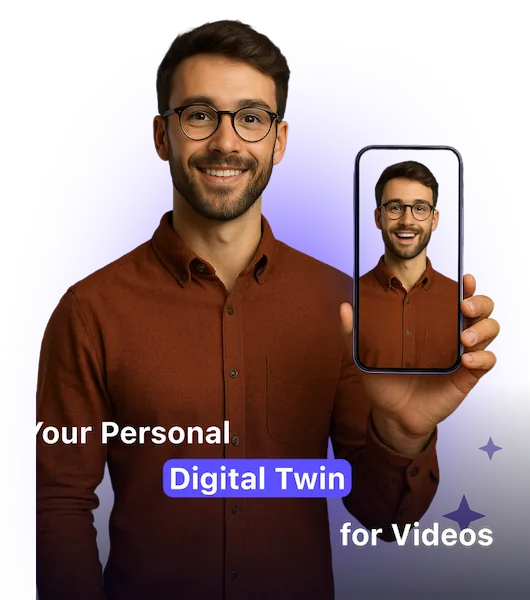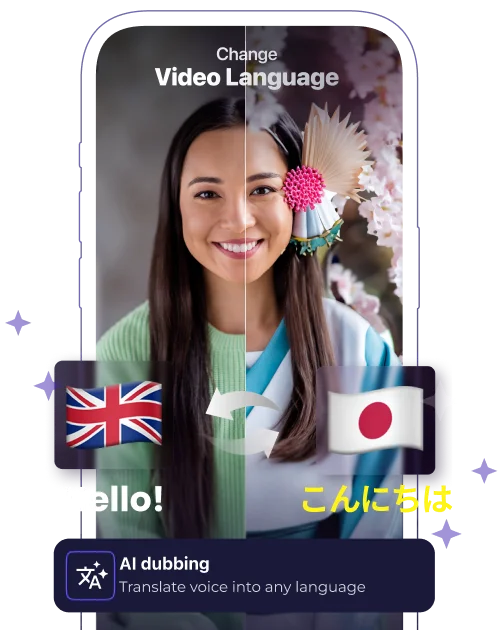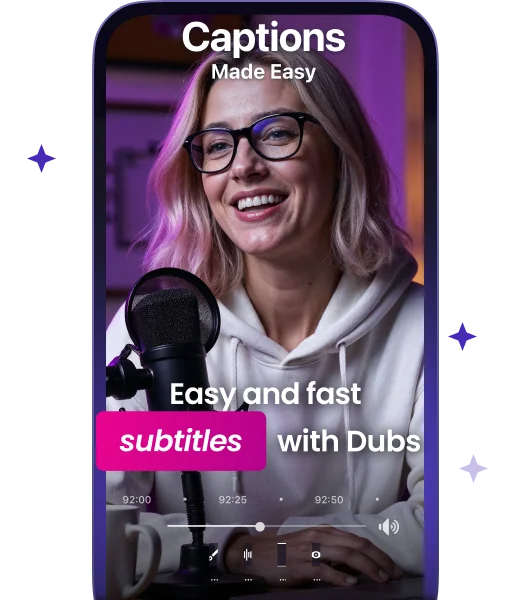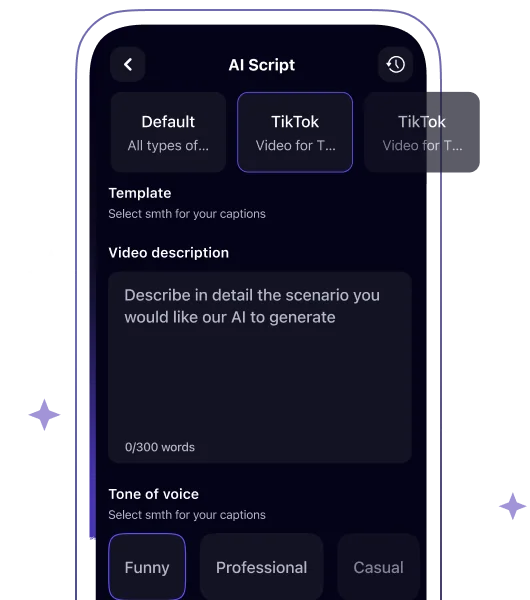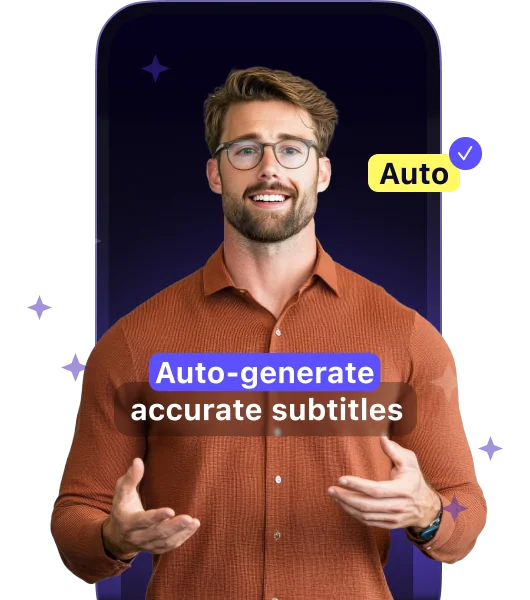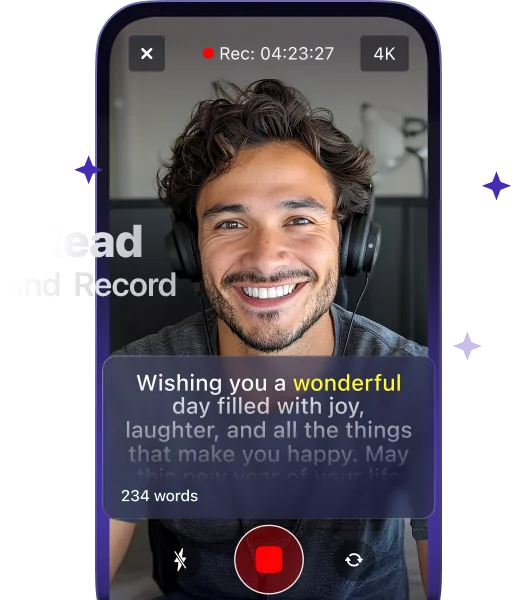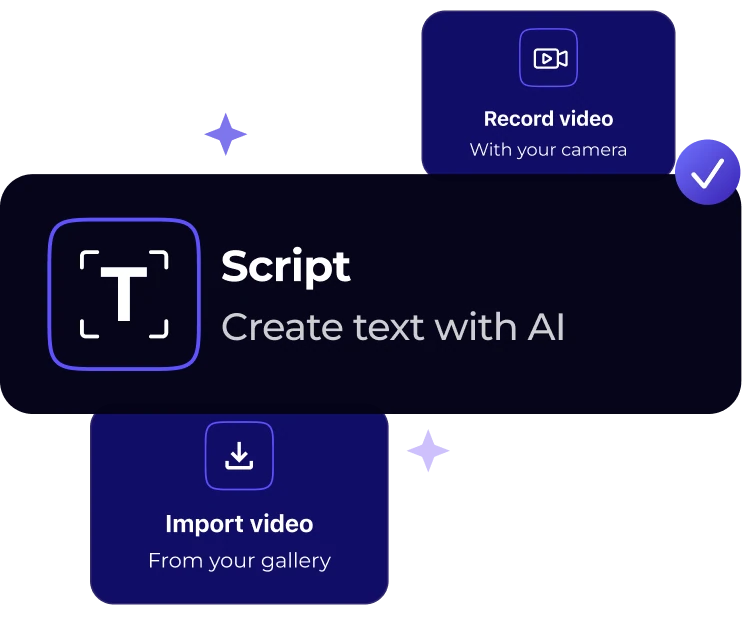Open Captions vs. Closed Captions vs. Subtitles: Learn the Difference
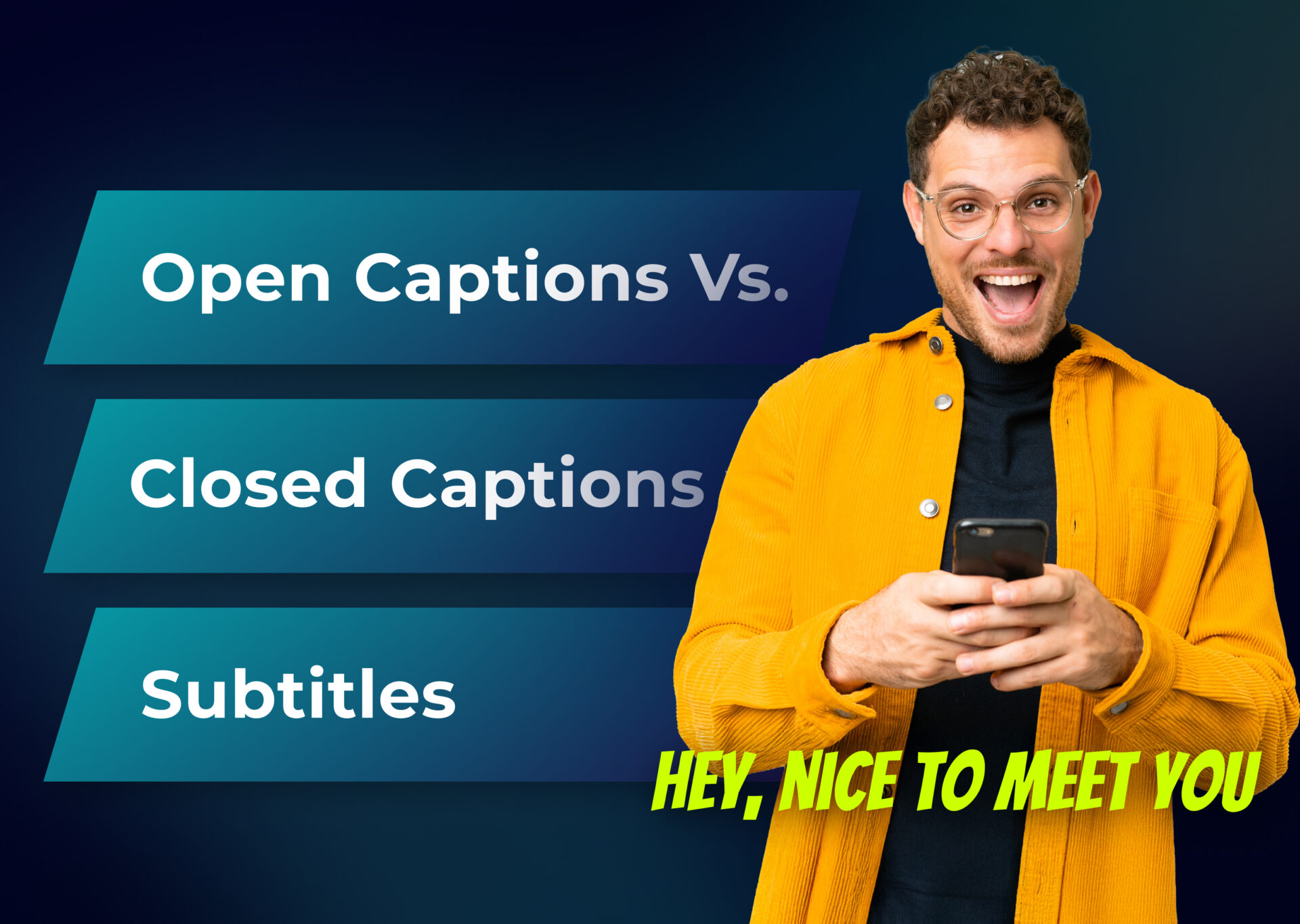
Have you ever wondered why, when you watch videos, some have text that you can’t turn off, while others let you toggle captions on and off? Or maybe you’ve noticed that sometimes these on-screen texts are called “subtitles” and other times “captions” – but aren’t they the same thing? Surprisingly, there’s more to this story than meets the eye.
From viral TikTok videos to your favorite Netflix series, on-screen text has become an integral part of how we consume media today. And while these terms – open captions, closed captions, and subtitles – might seem interchangeable, they each serve unique purposes and come with their own set of features that make them special. In this article, we’ll break down the key differences between these three types of on-screen text, explore when each works best, and help you understand which option might be right for your video content.
Table of Contents
Why Add Subtitles to Video Content
In today’s digital landscape, video content is literally everywhere. From educational materials and corporate training to entertainment and social media, videos have become our primary medium for sharing information and stories. But with this video-first world comes a crucial responsibility: making content accessible and engaging to everyone.
According to the World Health Organization, over 430 million people worldwide have disabling hearing loss (which is about 5% of the Earth’s population), and millions more watch video content in sound-sensitive environments like offices, public transport, or late at night while others sleep. The COVID-19 pandemic further accelerated this trend, as remote work and online learning made video content even more central to our daily lives.
Beyond serving those with hearing impairments, text displays in videos benefit a wide range of viewers, including:
- People learning a new language who use text to follow along with spoken content
- Viewers watching content in noisy environments
- Those who process information better through reading than listening
- International audiences who rely on translations
- People with auditory processing disorders or attention difficulties
Legal Requirements and Standards
The legal landscape surrounding video accessibility concerns not only good practice but also compliance with established laws and regulations. These regulations control internationally produced content released across global video platforms, specifying the technical details for proper subtitles and captions.
In the United States, several key pieces of legislation govern video accessibility.
The Americans with Disabilities Act (ADA) requires businesses and organizations to make their content accessible to people with disabilities. This includes digital content and videos, especially for educational institutions and government agencies. Similarly, Section 508 of the Rehabilitation Act mandates that federal agencies make their electronic and information technology accessible to people with disabilities.
For broadcast television, the Federal Communications Commission (FCC) has specific requirements under the Television Decoder Circuitry Act and the 21st Century Communications and Video Accessibility Act (CVAA). These laws establish standards for caption quality, including:
- Accuracy in transcription
- Synchronization with spoken words
- Completeness in capturing all speech and important sounds
- Proper placement to avoid obscuring important visual content
In the European Union, the European Accessibility Act sets similar standards, while countries like Australia, Canada, and the UK have their own comprehensive accessibility laws. These regulations aren’t just bureaucratic red tape – they represent a global commitment to making digital content accessible to everyone.
For content creators and organizations, understanding these requirements isn’t just about avoiding legal issues. It’s about embracing inclusive design principles that make content better for everyone. These standards serve as a foundation for creating truly universal video and audio content that reaches and engages all audiences.
Subtitles: Definition, Key Features, Use Cases
Subtitles are primarily designed to translate spoken dialogue into written text, usually when content is being viewed in a different language from the original audio. Unlike captions, subtitles work under the assumption that the viewer can hear the audio but needs help understanding the language being spoken.
Think of subtitles as your friendly language interpreter for internationally produced content in multiple languages. When you’re watching a gripping Korean drama or enjoying a classic French film, subtitles help you follow the story without needing to speak the original language. They focus mainly on translating dialogue, though they might occasionally include important written text that appears on screen, like a letter, a text message, or a street sign that’s relevant to the plot.
Types of Subtitles
The world of subtitles is more diverse than you might think. Here are the main types you’ll encounter:
Interlingual Subtitles are the most common type – these subtitles translate dialogue from one language to another. For instance, English subtitles for a Japanese anime or Spanish subtitles for an English documentary. These often require careful localization to ensure the meaning, not just the words, carries across cultures.
SDH Subtitles (Subtitles for the Deaf and Hard of Hearing) are a hybrid between traditional subtitles and closed captions. While they are often used in foreign movies and can include translations, they also incorporate some features of captions, like speaker labels and sound effects. However, they are typically less detailed than full captions.
Forced Subtitles appear only when dialogue in a foreign language occurs in a film that’s otherwise in the viewer’s native language. For example, in an English movie where a character briefly speaks French, forced subtitles would only appear during those French dialogue scenes.
When to Use Subtitles
Choosing subtitles over captions depends largely on your audience and content type. Subtitles are particularly appropriate in these scenarios:
- When your content is multilingual. If you’re releasing content internationally or in regions with multiple languages used at the same time, consider adding subtitles to reach a broader audience. They are particularly crucial for streaming platforms and international film distribution.
- For language learning purposes. Many language learners use subtitles as a learning tool. Watching online videos with subtitles in both their native language and the language they are learning can help improve comprehension and pronunciation.
- In entertainment settings. Movies, TV shows, and online content often use subtitles to preserve the original audio performance while granting equal access to content to viewers who speak different languages. This is especially important for content where the original language performance carries significant artistic value.
- For cultural content: When dealing with content that’s deeply rooted in a specific culture, subtitles can help bridge cultural gaps by providing context and accurate translations that respect cultural nuances.
Unlike captions, subtitles don’t typically include non-speech information because they assume the viewer can hear other audio elements. This is one of the key distinctions we’ll explore further when we compare them to open and closed captions.
Closed Captions: Definition, Key Features, Use Cases
Closed captions are text displays that can be turned on or off by the viewer. They provide a complete textual representation of the audio content in a video. Unlike subtitles, closed captions operate under the assumption that the viewer cannot hear the audio at all, so they include all meaningful sounds beyond just dialogue.
The term “closed” comes from the fact that these captions are encoded in the video signal but hidden until activated by the viewer through their device settings or media player controls. They are not attached to the media file and come as a separate SRT file. This flexibility gives viewers the choice to enable or disable captions according to their needs, making them a versatile accessibility tool for global audience members.
Components of Closed Captions
Closed captions include several key elements that make them comprehensive for viewers who can’t access the audio:
- Speaker differentiation. When multiple people are talking, closed captions indicate who’s speaking, often using labels like [Mark:] or different text positions on the screen. They also note when speakers are off-screen or their tone of voice changes significantly.
- Sound effects and background noises. Important audio cues are described in brackets, such as [door creaks], [phone rings], or [dramatic music plays]. These descriptions help viewers understand the full context of a scene, including ambient sounds that contribute to the atmosphere. They also come as a valuable accessibility tool in videos with poor audio quality.
- Musical information. When music plays, closed captions can include song lyrics (if relevant to the content), a description of the music type [upbeat jazz music], or an indication of an instrumental passage [instrumental interlude].
- Non-speech elements. Meaningful sounds made by characters are included, such as [laughs], [sighs], or [gasps]. These emotional indicators help convey the full range of communication happening in a scene.
Benefits of Closed Captioning
Closed captions serve a wide range of purposes and audiences, making them invaluable in modern media. Below are some of the biggest advantages and causes of adding captions to video files.
The primary and most crucial benefit is accessibility for deaf and hard-of-hearing viewers. Closed captions create a complete audio experience through text. They ensure no important information is missed and provide access to the content to all viewers equally. This accessibility extends beyond those with hearing impairments – viewers with auditory processing disorders or attention difficulties also find captions incredibly helpful for following along with content.
Enhanced comprehension is another significant advantage of closed captioning. Students and children developing literacy skills often benefit from seeing words as they hear them, while non-native speakers can improve their language comprehension by connecting spoken audio with written text. This dual-input learning approach has proven particularly effective in educational settings.
From a technical perspective, closed captions significantly improve content searchability and benefit SEO scores. When global video platforms can index caption text, it becomes easier for users to find specific moments in videos and for search engines to understand and rank video content appropriately. This improved discoverability can lead to increased viewership and better content organization.
The flexibility of closed captions in different settings cannot be overstated. In public spaces where audio must be muted, such as waiting rooms, captions allow viewers to watch videos without sound. In educational environments, they provide an additional learning tool, while in workplace settings, they enable video consumption without disrupting colleagues. This adaptability makes captioned content more versatile and accessible across various viewing situations.
Legal compliance represents another crucial benefit of closed captioning. Content released through institutions like television or educational platforms must meet specific accessibility requirements like the Americans with Disabilities Act. Many corporations also maintain internal communication guidelines that mandate captions for all videos, ensuring legal compliance and creating an inclusive workplace environment.
Unlike open captions, which we’ll explore next, with closed captions turned on, video content offers more viewer control as they don’t permanently alter the visual composition of the video. This, together with other key differences, makes them a popular choice for many content creators and platforms.
Open Captions: Definition, Key Features, Use Cases
Unlike closed captions, open captions can’t be turned off because they are “burned” or encoded directly into the video image. They display the same information as closed captions, including spoken word, speaker differentiation, background noises, and sound effects, but they are an inseparable part of the video’s visual elements.
These captions become part of the visual composition during the video editing process, allowing creators to have complete control over their appearance, placement, and styling. You can add captions this way with the help of video editing apps or specialized subtitling services like Dubs. This integration means they’ll appear exactly as intended across all platforms and devices, without relying on video player settings or caption decoding capabilities.
Advantages and Disadvantages of Open Captions
A key advantage of open captions is their universal reliability. Since they are part of the video itself, they work consistently across all platforms and devices without any technical requirements for diverse video players. They are guaranteed to display correctly with their intended font, size, and positioning regardless of where the video is played.
Open captions also offer creative freedom in terms of design. Content creators can customize the appearance to match their brand aesthetics, use creative animations, or integrate captions artistically into the video composition. This level of control ensures that captions enhance rather than detract from the visual experience.
However, this permanence comes with notable drawbacks. Once open captions are added, they cannot be edited, translated, or removed without re-editing the entire video. This makes it challenging to correct errors, update information, or create caption files in different languages. Additionally, viewers who don’t need or want captions have no option but to watch with them.
Another significant consideration lies in the file sizes. Since open captions are part of the video image, they can increase the overall video file size compared to other types: a closed caption file takes up significantly less space than a graphic overlay that open captions are. This difference might affect storage requirements and streaming performance, particularly for longer content.
Use Cases for Open Captions
Social media platforms represent the perfect environment for open captions. Many users watch social videos on mute, and platforms like Instagram, TikTok, and Twitter often auto-play videos silently. Open captions ensure your message gets across regardless of how viewers encounter your content.
Marketing and promotional videos also benefit from open captions. In busy environments like retail displays or digital billboards where audio might be impractical or impossible, open captions ensure your message remains clear. They are particularly effective for short-form content where immediate comprehension is crucial.
Educational and training materials often utilize open captions when consistency across platforms is crucial. For instance, in workplace safety videos or instructional content, where missing information could have serious consequences, they guarantee that important information is seen by all.
Live streaming replays and highlights frequently employ open captions, especially for content with a quick turnaround. When time doesn’t permit the creation of proper closed captions, these captions can be added during the editing process to make highlight clips and compilations immediately accessible to a broader audience.
Artistic and creative content can also leverage open captions as a design element. Music videos, artistic films, and creative content often integrate captions in stylistic ways that contribute to the overall visual aesthetic. Think lyric videos for songs or creative TED-Ed animated clips with every spoken word accentuated on screen. With nearly limitless flexibility in terms of layout and design, open captions have the power to turn what could be a purely functional element into part of the creative expression.
Open Captions vs. Closed Captions vs. Subtitles: Detailed Comparison
To truly break down the differences between these three types of text displays, it’s helpful to see them side by side. Understanding these distinctions can help both content creators and viewers choose the right option for their specific needs, whether creating captions or choosing the type to watch videos with.
| Feature | Subtitles | Closed Captions | Open Captions |
| Primary Purpose | Language translation for hearing viewers | Accessibility for deaf and hard-of-hearing viewers | Accessibility and universal design |
| Can Be Turned Off | Yes | Yes | No |
| Audio Information | Dialogue only, rarely includes sound effects | All audio including sound effects, speaker identification, and music | All audio including sound effects, speaker identification, and music |
| File Format | Separate file (.srt, .sub) | Separate file (.scc, .vtt) | Embedded in video |
| Editing After Creation | Yes | Yes | No |
| Platform Dependencies | Requires player support | Requires player support | Works on all platforms |
| File Size Impact | Minimal | Minimal | Increases video file size |
| Language Support | Multiple language tracks | Multiple language tracks | Single language only unless multiple video versions are created |
| Customization by Viewer | Yes | Yes | No |
| Technical Requirements | Video player must support subtitle files | Video player must support caption decoding | None – works everywhere |
| Best Used For | International content, foreign films | Broadcast TV, educational content, compliance requirements | Social media, short-form content, marketing videos |
| Creative Control | Limited to player capabilities | Limited to player capabilities | Complete creative control over appearance |
| Real-time Adjustments | Possible through player settings | Possible through player settings | No adjustments possible |
Best Practices for Creating Captions and Subtitles
We’ve collected the best tips and tricks to help you ensure your text displays are effective and professional. Poor caption quality can be worse than no captions at all, as it can confuse viewers and detract from the viewing experience. Let’s explore the biggest how-tos of adding subtitles and captions.
Formatting Guidelines
Text readability is crucial for effective captioning. Each caption line should contain no more than 32-42 characters to ensure comfortable reading speed and comprehension. This typically means using one or two lines of text at a time – anything more can overwhelm viewers and obscure too much of the video.
Font choice and styling play a vital role in caption legibility. Sans-serif fonts like Helvetica or Arial are preferred for their clarity. Text should be displayed in a color (typically white) that contrasts well with its background, usually achieved through a semi-transparent black box or white text with a dark outline.
Proper line breaks are essential for comprehension. Captions should be broken at natural linguistic points, such as between clauses or after punctuation marks, rather than mid-phrase. Each caption should represent a complete thought when possible, making it easier for viewers to follow along.
Timing and Synchronization
Caption timing must align precisely with the spoken word: the line should appear at the exact moment the speech begins and disappear when it ends. A good rule of thumb is that captions should remain on screen for at least one second but no more than seven seconds, allowing enough time for comfortable reading without lingering too long.
Remember to consider reading speed. For adult content, captions should be displayed at a rate of 15-20 characters per second, and children’s content or educational materials should use a slower rate. When speech is rapid, it’s acceptable to condense the text slightly while maintaining all essential meaning.
Handling Non-Speech Audio Elements
Non-speech sounds require careful consideration in captioning. Important audio effects should be described concisely in brackets, such as [door creaks] or [phone vibrates]. However, not every sound needs to be captioned – focus on sounds that are relevant to understanding the content or plot.
Speaker tags are crucial when multiple people are talking, especially during off-screen dialogue. Speakers can be identified by name or description in brackets, such as [Maria:] or [Reporter:]. Different speakers’ captions can also be distinguished by positioning or color coding.
Music deserves special attention in captioning. When music is integral to the content, include relevant information such as:
- Song titles and artists when appropriate
- Descriptions of the music’s mood or style [upbeat jazz music]
- Relevant lyrics, especially if they contribute to the narrative
- Indications of instrumental sections when significant
Conclusion
Although the three types of on-screen text are similar, they are not exactly interchangeable. Each type serves unique purposes and audiences, from making content accessible to the deaf and hard-of-hearing community to breaking down language barriers for international viewers watching foreign films. By choosing the right type of text display for your content and following the best practices we’ve outlined, you can create more inclusive and engaging videos that reach a broader audience.
Ready to make your videos more accessible and engaging? Try out the Dubs app for high-quality automated subtitles and captions. With support for multiple languages and advanced AI technology, Dubs makes it easy to add accurate captions to your videos in minutes.
Start captioning your videos today and join the movement toward more accessible, inclusive content creation, and watch your videos thrive!
More articles

150+ Best Vacation Instagram Captions to Make Your Travel Photos Pop
Planning your dream vacation is exciting, but finding the perfect words to accompany those stunning photos can be challenging. Whether you’re lounging on a tropical beach, exploring ancient ruins, or hiking breathtaking mountains, the right caption can elevate your Instagram post from ordinary to unforgettable. You’ve packed your bags for the family vacation, created memories, […]

175+ Unforgettable Prom Instagram Captions to Make Your Night Shine | 2025 Edition
Capturing the magic of prom night on Instagram requires more than just stunning photos – you need the perfect caption to complete your post. Whether you’re looking for something sentimental, funny, referencing your favorite song lyrics, or the photos from the dance floor, the right words can make your prom memories shine even brighter on […]

200+ Beach Instagram Captions: From Funny to Inspirational Quotes
Looking for the perfect words to pair with your beach photos? You’re not alone. A day at the shore isn’t truly complete until you’ve captured those sun-soaked moments and shared them with a caption that perfectly complements your vibe. Whether you’re posting golden hour selfies, documenting beach games, or showcasing those “sunkissed nose, sandy toes” […]

